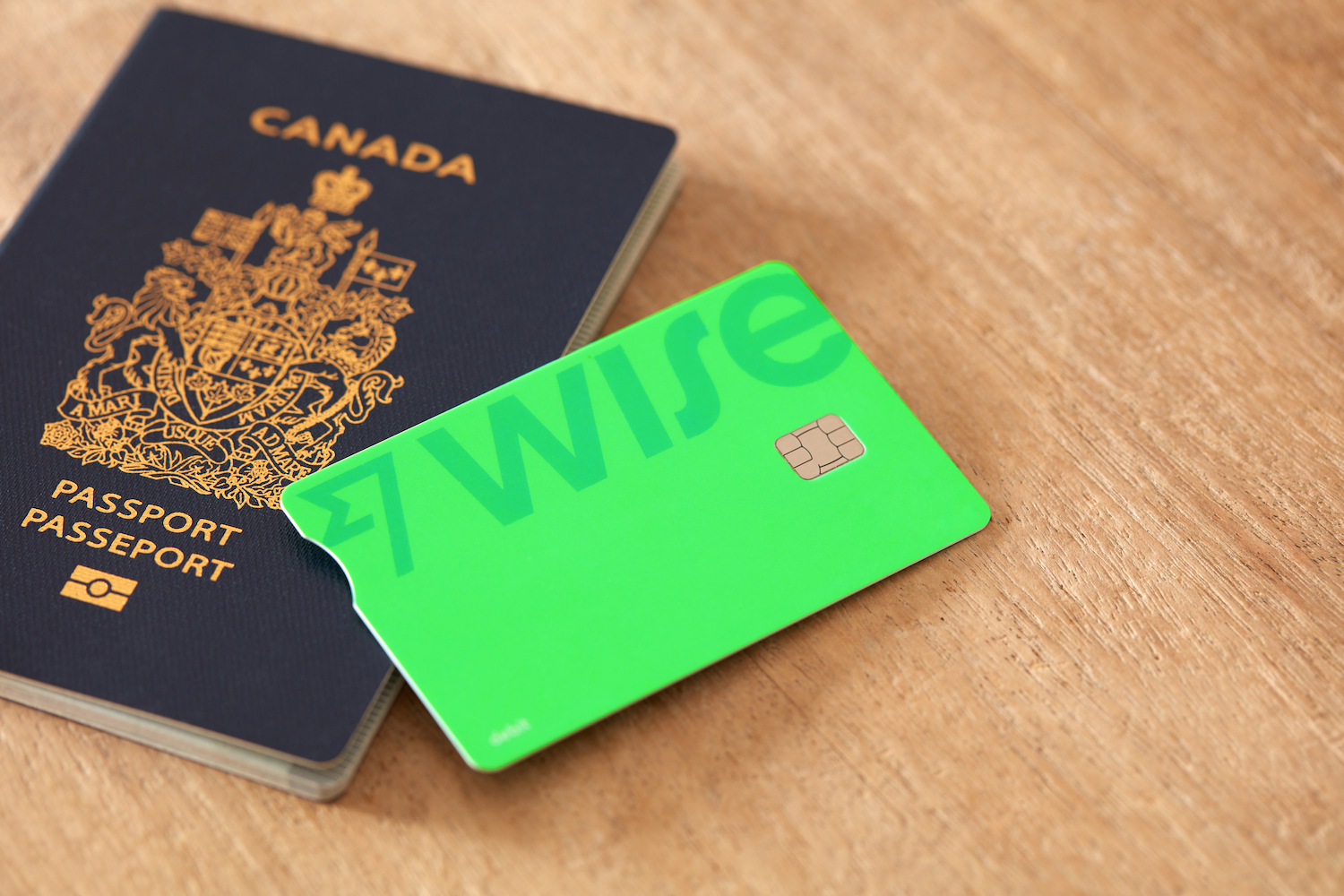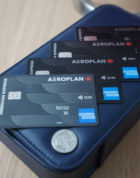Recently, I wrote an article on some of the best ways you can transform your Canadian dollars into their muscly American cousins. In that article, I noted that many countries around the world are still very reliant on cash.
Today, I want to take a look at five of the best ways you can turn your maple syrup bucks into physical foreign currency for your next globetrot somewhere still running on the paper economy.
In This Post
- 1. Canada Post
- 2. Order from an Online Broker
- 3. Pick Up at your Favourite Bank
- 4. Load a Prepaid Credit Card
- 5. Fall Back on your Debit Card
- Conclusion
1. Canada Post
If you’re like me, you probably don’t like like having to turn your travel plans into a chore. It can be a bit daunting to go to a physical space and pickup large wads of cash.
I know that beside the time consumption, I can feel a little suspicious walking around with thousands of dollars in strange foreign bills on my person. To add insult to injury, many of the forex exchanges running physical brick-and-mortar stores really don’t give you the best bang for your buck.
That’s why Canada Post and CIBC partnered up back in 2015 to start offering you the convenience of cash delivered to your own home. Their website offers a very clear and concise picture of exchange rates.
Let’s take a look at a sample of how many US Dollars Canada Post will give us for $1,000 (CAD). I consider the USD to still be the most versatile individual currency for global travel, and it’s in fact the official currency in stopover-friendly destinations such as Panama City.

US$758 in cash for our $1,000 isn’t half bad, especially when you consider that it’s delivered straight to your front door. Of course, this isn’t as lucrative an option as some of the others on this list, but it’s one of the most convenient and is officially backed and insured by Canada Post itself.
In order to purchase foreign cash via Canada Post, just follow the six steps they outline on their website:

Complete these steps, then pay for your order with either Visa Debit or Interac. Shipping to your home or local post office is free. Remember you’ll have to provide valid ID either during the delivery process or when going to the post office to physically pickup your cash.
My major critique of this service, aside from not having the best exchange rates on the market, is that you’re limited to only $2,500 (CAD) worth of foreign cash per 30 days. Still, the convenience is top-notch.
2. Order from an Online Broker
If Canada Post doesn’t cut it for you, then you can always check what foreign exchange rates are available on the open market. This could involve checking with local foreign exchanges, but I’m happy to note that in this digital era several businesses have gone online.
Most of these businesses also offer home delivery, though they are subject to monthly caps on the amount of cash that you can order (presumably in order to prevent money laundering or other unsavoury activity).
I’ve found a few websites that offer this service, but by far the best rates I’ve seen thus far have come from the Toronto-based forex exchange Interchange Financial. Let’s look at what we’ll get for our sample CAD-to-USD example:

This is quite competitive, standing at about US$17 more than our Canada Post example. However, note that Interchange Financial will require any amount of cash you purchase to be divisible by the smallest unit of bills that they have in inventory.
In this example, their smallest USD bill is $20, thus our purchase total must be divisible by 20 – and hence why the system is obligating us to purchase US$780.

I think this is an excellent exchange service, and also am thankful that they offer free Canada-wide delivery. Payment can be made via a Visa Debit card or Interac e-Transfer; I definitely wouldn’t recommend trying your luck with a credit card as this could lead to nasty cash advance fees. Money purchase limits are the same as Canada Post at $2,500 per month.
In case you’re feeling naturally suspicious of dealing with a private online broker, do note that Interchange is fully regulated by FINTRAC. Ensure you do your research on any other online broker before doing business with them.
3. Pick Up at your Favourite Bank
For some folks, shipping large amounts of currency sounds unappealing. What if something goes wrong? On top of that, not everyone is comfortable typing in their Visa debit card number or sending an e-Transfer to a third party when very large quantities of money may be on the line.

In such a situation, or for those of you with preferred exchange rates, then the best option may be to exchange your Canadian dollars for foreign currency at your preferred bank. In fact, most of the Big 5 banks in Canada will have USD in stock at your local branch, and often euros and pounds sterling as well.
Thus, sometimes an old-school bank will be the most convenient option. But how do the big banks’ exchange rates stack up?

As we can see here, a canny TD customer could get US$756 for their $1,000 from their local branch as early as today. That’s not half bad at, even if it’s a hair below Canada Post and Interchange FX.
Naturally, you’ll need to be a TD banking customer to take advantage of this rate and can only pick up at eligible locations, but it’s not an option to be written off.
The money will be deducted directly from your chequing account, no debit card or Interac tricks required.

BMO’s website, on the other hand, is a blast from the past! However, a client of the Bank of Montreal could still expect to collect about US$759 for their $1,000.
Payment is likewise immediately withdrawn from your regular chequing account. While the opportunity cost is a couple bucks, it could be a good way to get cash today instead of later.
4. Load a Prepaid Credit Card
For our next two methods for getting foreign hard currency, we’ll be focusing more closely on ATM withdrawals at your destination. Sometimes, it’s a better idea to just get your money on an “as-needed” basis.
Of course, when you do need cash, you’ll sometimes need quite a bit of it at once. That’s where your travel plans may get frozen in their tracks by the annoying reality of daily withdrawal limits, which can often be quite low – sometimes as little as $500 per day.
If you want to avoid carrying too many banknotes at once, but still have the option to load up on them should the need arise, I therefore recommend the Wise Prepaid Visa because of its generous daily transaction limits.

In order to withdraw funds at ATMs from this card, you’ll have to load it via a direct withdrawal from your bank account through a Visa Debit card, but once the funds are loaded I definitely feel the card is worth carrying. Cash withdrawals of up to $5,500 per month should be more than enough for the casual traveller.
Better yet, Wise’s exchange rates are some of the most competitive on the market:

US$783 for $1,000 is the best exchange rate we’ve seen on this list yet, and even if the ATM you withdraw from dings you a small fee, I still think you’ll come out ahead of the competition.
Overall, I feel the Wise card is an excellent alternative to hauling physical currency around, which is a proposition made even more undesirable by dint of likely requiring one to wear an appallingly ugly fanny pack.
5. Fall Back on your Debit Card
When all else fails, you can at least rely on your trusty debit card. So long as you are using an ATM at a reputable financial institution and not a dingy back-alley bar, the spot conversion rate will almost always beat out local currency dealers, even if you have to pay an obnoxious foreign ATM fee.

However, said fees are not always a requirement. Canadian financial institutions are often present in the strangest of places. Scotiabank, for example, has ample presence in Latin America and the Caribbean, and a series of reciprocal agreements with other banks which will allow you to use their ATMs without fear of banking fees.
Similarly, the other Big 5 banks often have similar treaties with other institutions, and so you can rest easy using your domestic debit cards overseas should the need arise.
While I personally would prefer to have the cash on me should I require it, there’s nothing wrong with taking out money at your destination via your debit card if that’s more your style.
Conclusion
As exciting as travel is, it can also be a time fraught with stress, not least of which is the concern of “how will I pay for stuff at my destination?” This is an issue that can feel doubly serious when flying to a country where credit card acceptance is not at Canadian levels.
I hope that today I’ve helped you find a few ways to save your money by securing excellent exchange rates for the cash you need to make the most of your voyages.
Until next time, keep your bills uncreased.





















